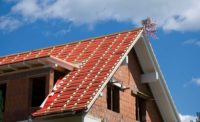Despite a skittish economy, rising materials prices and mortgage woes, today's surviving builders are embracing adaptation, reinvention and optimism as they await a housing-market rebound in 2013. Attendance at the International Builders Show in Las Vegas last month reached 48,722, down 5.3% from the previous year, but many still remain hopeful about the market.
"For the first time in years, all signs are pointing up for our industry," said Barry Rutenberg, National Association of Home Builders chairman. "It has been a prolonged, painful downturn. But we're on the cusp of a long-awaited recovery."
Turnaround signs are faint. "Consumer confidence has been slow to rebuild and still remains historically low three and a half years into the recovery," said Frank Nothaft, Freddie Mac chief economist. "Markets that are still weak are the ones that have an excess supply. Vacancy rates in rentals have come down significantly, which is important to push property values up."
Homes prices rose nearly 6% on average over the last year, "triggering a demand to return," said NAHB's chief economist, David Crowe. But the rising prices could be due partly to increased construction costs for new residences. Lumber prices averaged $400 per thousand board-feet on Jan. 18, up from $283 mbf a year prior, reports Random Lengths, a Eugene, Ore., commodity analyst. Crowe noted, "Suppliers and manufacturers who curtailed production during the downturn are tentative about ramping up production again." He added, "Before investing capital into plant expansions and additional people, they want to feel more confident about a sustained recovery."
Skilled-labor constraints are also a concern, attendees said. "Many subcontractors went out of business during the downturn, while others tried unsuccessfully to make the transition into the commercial sector," says Lance Swank, COO of The Sterling Group Inc. "Construction costs have gone up 16%. It's still very difficult to find financing for construction, which, I believe, is going to create constraints in meeting market demands."
The Portland Cement Association was bullish on a recovery this year. It reports total housing starts are predicted to reach 954,000 units in 2013, 30% above last year's figure. "Although the first half of 2013 will be mired in a fiscal-cliff hangover, we are decidedly optimistic about second-half economic growth, job creation and consumer sentiment—all of which translate into stronger home sales and starts activity," says PCA's chief economist, Edward Sullivan.
With job growth weak and mortgage lending tight, experts say rentals will drive housing construction. "The multifamily [housing] industry has been going through a very strong recovery, but we haven't been building enough to keep up with demand," says Sharon Dworkin Bell, NAHB vice president for multifamily housing. Michael Costa, president of Highridge Costa Housing Partners LLC, a California apartment developer, notes current occupancy rates of 96.5% to 97%. According to Sterling's Swank, whose company builds multifamily properties in 14 states, "there will be an overall deficit of up to six million units in the next decade."
Attendees also see a boost in home remodeling. "After limiting spending during the housing bust, renovating the more than one million distressed properties that were sold in 2001 contributed nearly $10 billion to home-improvement spending," says Eric Belsky, managing director of Harvard University's Joint Center for Housing Studies. "With about three million more foreclosure and short sales in the pipeline, there is more spending ahead."





Post a comment to this article
Report Abusive Comment